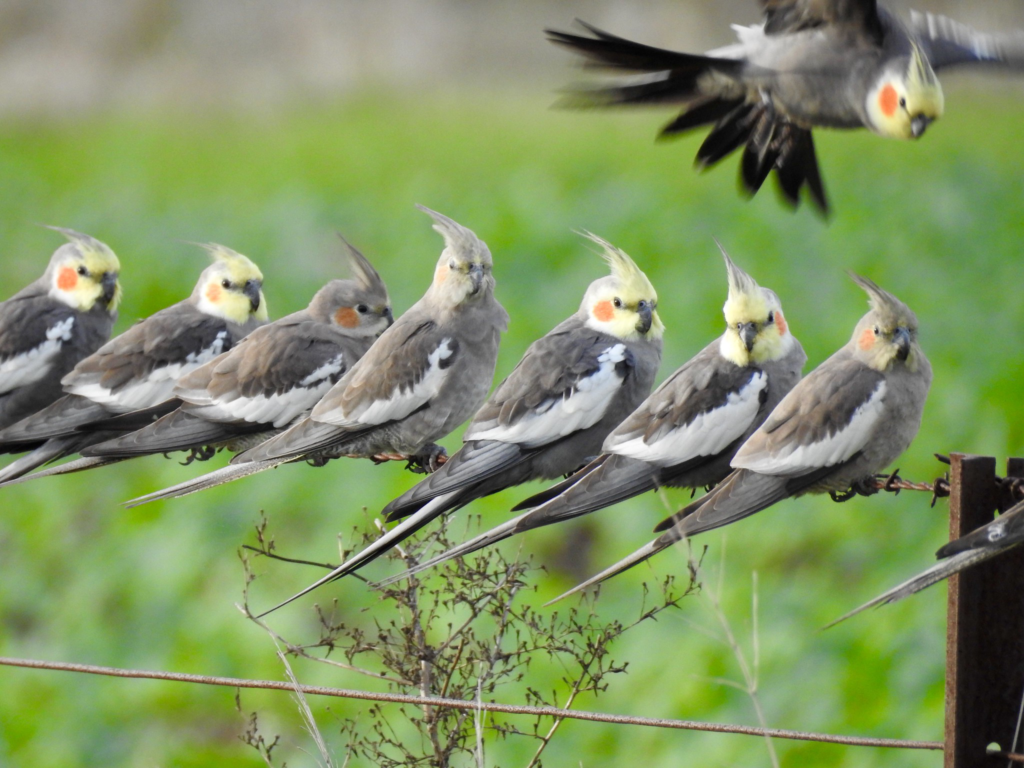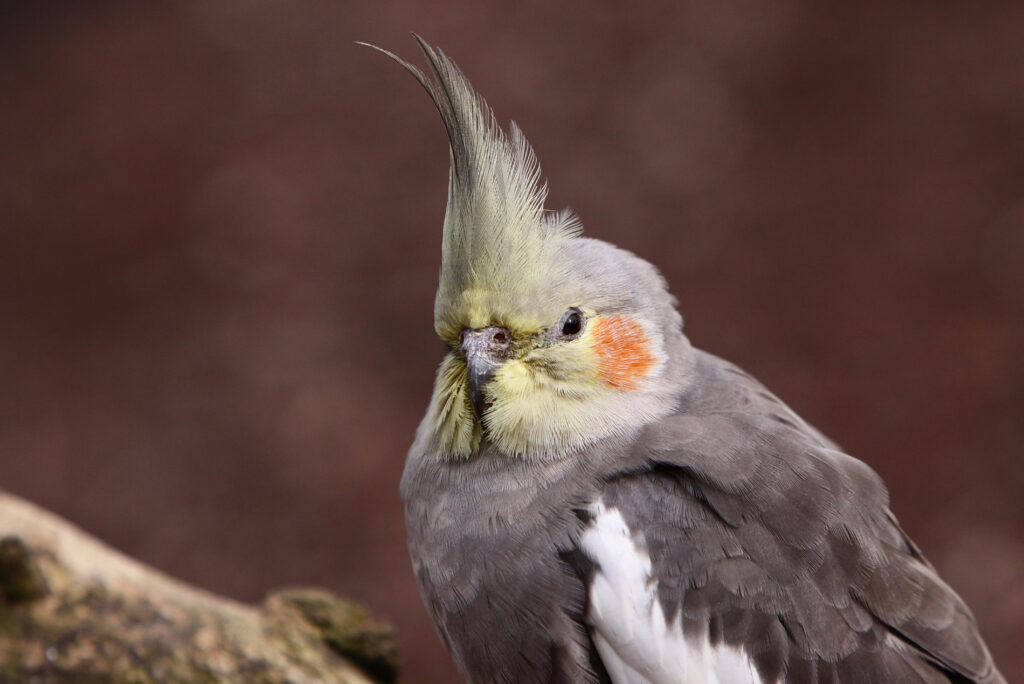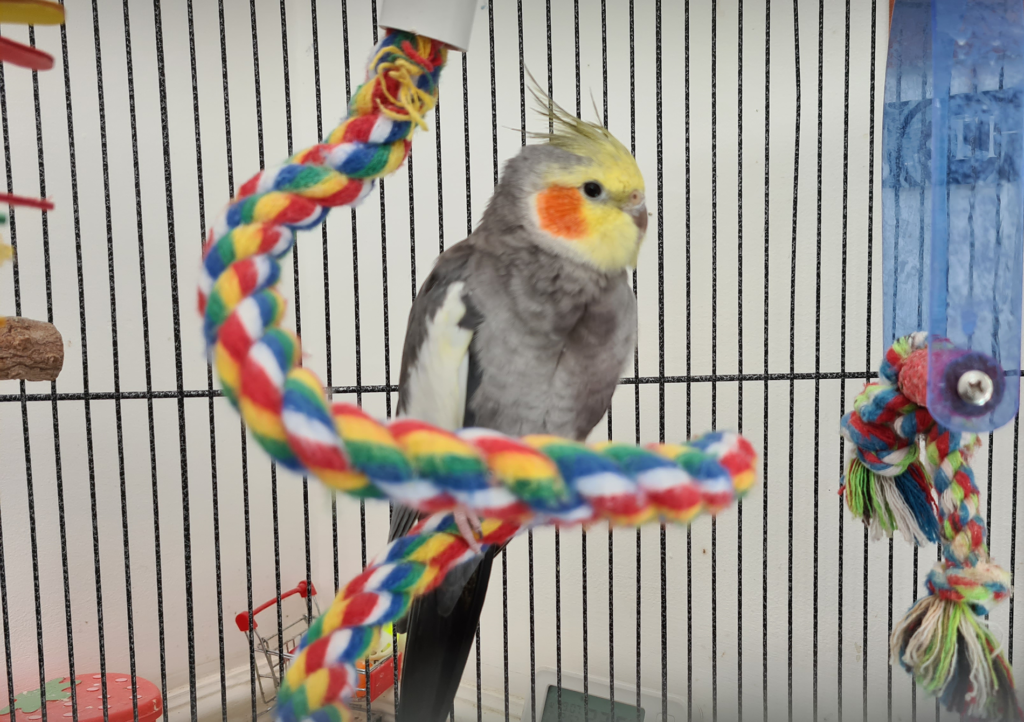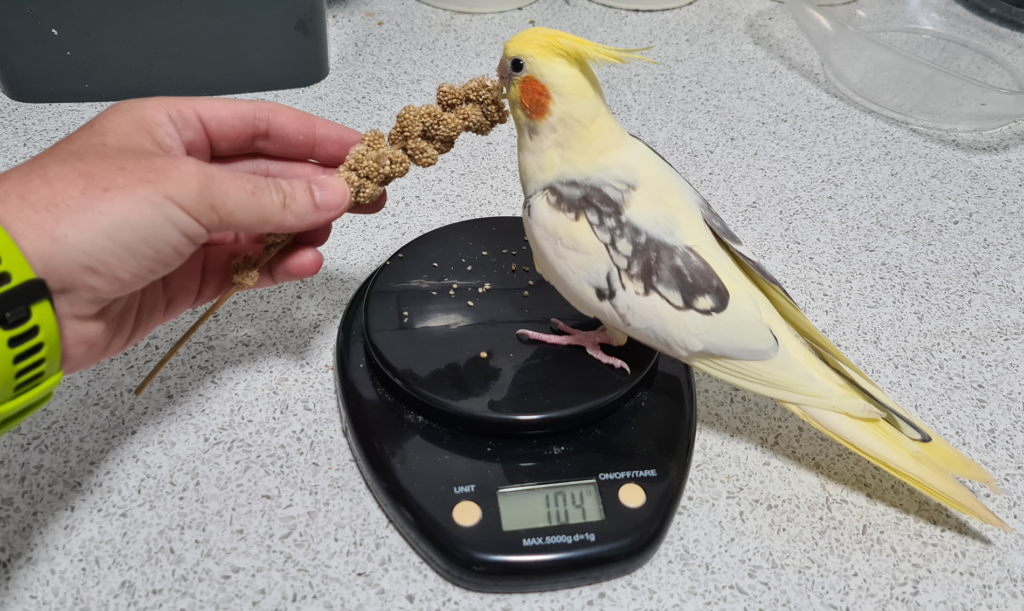So, you’re interested in cockatiel history? Well, strap in, because we’ve got a journey through time ahead of us.
The Cockatiel’s Origins: Wild and Wonderful Australia
The first page of the cockatiel history book opens in Australia’s unforgiving landscapes. Cockatiels, scientific name Nymphicus hollandicus, are actually a part of the cockatoo family, one of the few parrots native to the rugged Australian terrain. With their striking crests and versatile voices, they quickly adapted to the varied climates across the continent. From the coastal wetlands to the harsh arid interior, these plucky little birds established a presence throughout.
Imagine those first flocks of cockatiels, swirling like a feathered tornado across the dusty Australian plains. Their iconic crest feathers standing tall, signaling their moods and intentions to each other – a unique characteristic that makes them so endearing to us today.
A Cockatiel in Your Living Room: Domestication
Now, let’s turn the page to the domestication chapter in the cockatiel history. No, we’re not still in Australia. We’re in Europe during the late 18th and 19th century. The advent of seafaring exploration led Europeans to the far corners of the world, and with them, they brought back exotic flora and fauna – including our lovely cockatiels. The first recorded instance of a cockatiel in Europe was around 1793, but their popularity as pets really took off in the 20th century.
One can imagine the delight of a European bird fancier, seeing a cockatiel for the first time. Its expressive crest, its vibrant cheek patches, and its charming whistles would be unlike anything they’d encountered before.
The Rise of the Pet Cockatiel: Popularity Growth
The next chapter of cockatiel history sees these captivating creatures start to become household names. They emerged as a pet of choice in the United Kingdom around the mid-20th century.
This surge in popularity wasn’t just because of their charming looks, though that certainly helped. The real appeal lay in their personalities. Cockatiels are known to be sociable, affectionate, and intelligent. Cockatiel males are able to mimic tunes and even human speech, though not as proficiently as some other parrot species. They’re also relatively easy to care for, making them a great choice for novice bird owners.
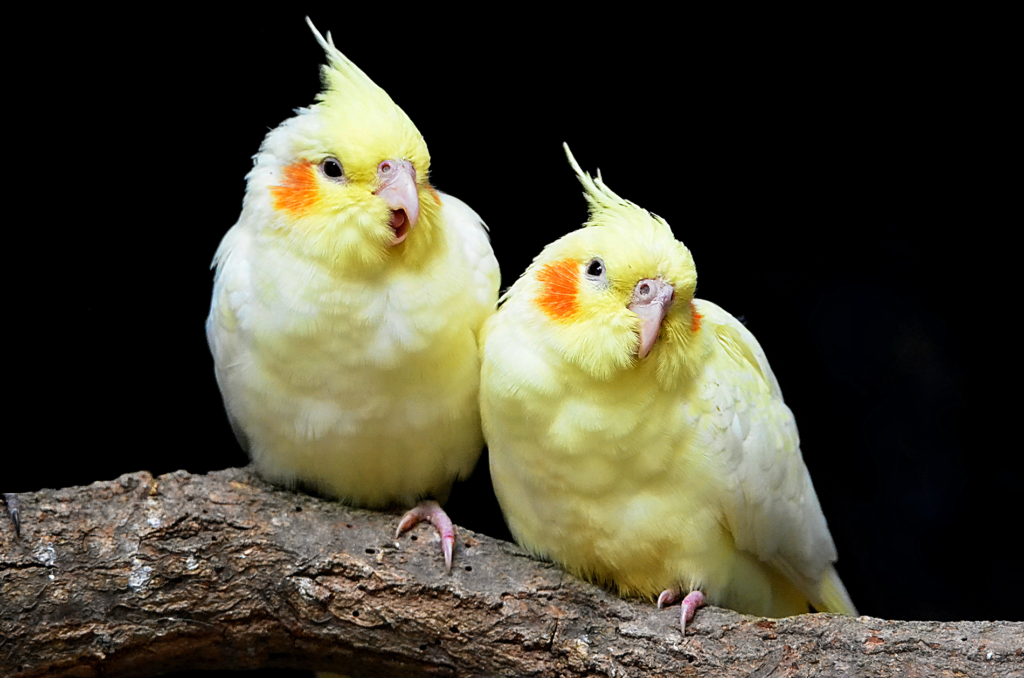
Cockatiel Breeding and Mutations: A Rainbow of Feathers
One of the most exciting sections of the cockatiel history book is its breeding and mutation chapter. Wild cockatiels are generally grey, but thanks to selective breeding, we now have cockatiels in a kaleidoscope of colours.
The first mutation to be recognised was the Lutino cockatiel, first seen in captivity in the 1950s. These birds, with their white to soft yellow feathers and ruby-red eyes, were quite the sensation. Then came the Pied, Pearl, Cinnamon, and many more, each adding a new hue to the cockatiel rainbow.
Modern Cockatiel: A Beloved Companion
Now we’re on the last chapter of the cockatiel history book, the present day. The cockatiel’s journey from the wilds of Australia to becoming one of the world’s most beloved pet birds has been nothing short of extraordinary.
They’ve made quite an impact in popular culture as well. Just think of social media platforms bursting with adorable and hilarious cockatiel videos. From performing acrobatics on swing toys, dancing to popular music, to showing ‘attitude’ with their expressive crests, they are digital age stars in their own right.
The cockatiel history book is a fascinating one, showing us how interconnected we are with the world around us. They may be small, but these birds certainly know how to make a big impression. From Australia to Europe to the United States, the cockatiel has marked its place in history and in our hearts, one whistle at a time.
Frequently Asked Questions
When did cockatiels first appear in history?
Cockatiels first appeared in historical records in the late 18th century, around the time when European explorers began documenting Australia’s unique wildlife. They were officially classified by naturalists in 1793.
How did cockatiels transition from wild birds to household pets?
Cockatiels were initially brought from Australia to Europe in the 18th and 19th centuries. Over time, their docile nature, relatively low maintenance needs, and charming characteristics led to their domestication and popularity as household pets, especially in the 20th century.
Why did cockatiels become popular pets in the United Kingdom?
Cockatiels became popular pets in the United Kingdom for several reasons. They are small in size, sociable, and adaptable to various living conditions. Also, their ability to whistle and mimic sounds made them entertaining companions, contributing to their popularity in the mid-20th century.
What’s the significance of the Lutino cockatiel in cockatiel history?
The emergence of the Lutino cockatiel in the 1950s marked the first recognised color mutation in cockatiels. This opened the door for selective breeding, resulting in the variety of color mutations we see in pet cockatiels today.
How has the popularity of cockatiels evolved over the years?
From being novelty pets in the 18th and 19th centuries, cockatiels have become one of the most popular pet birds globally. Their popularity surged in the 1990s, and they remain highly favored today due to their friendly nature and striking appearance.
How has selective breeding changed cockatiels over time?
Selective breeding has led to an array of colour mutations in cockatiels, from Lutino to Cinnamon to Pearl, adding to their appeal. It’s also helped breed cockatiels with temperaments more suited to living as domestic pets.
What role do cockatiels play in modern culture?
Cockatiels play a significant role in modern culture. They are often featured in media and online platforms, and their charm and antics have made them stars on social media. They continue to be an integral part of many households, providing companionship and entertainment.
How has our understanding of cockatiels changed through history?
As we’ve grown to understand cockatiels better over time, we’ve become more adept at catering to their needs and ensuring their well-being. This has improved their lifespan and quality of life in captivity. We’ve also come to appreciate their intelligence and unique personalities more, leading to their continued popularity as pets.
What were the initial challenges in domesticating cockatiels?
Early challenges in domesticating cockatiels involved providing the right diet and habitat, and understanding their social needs. Additionally, dealing with their natural instincts, such as the desire to fly and forage, was a challenge in a domestic setting.
How do historical cockatiel breeds compare to modern ones?
Historical cockatiel breeds were primarily the wild grey type. However, modern breeds, thanks to selective breeding, now include a variety of colour mutations and patterns. The personalities of cockatiels have also been somewhat influenced by breeding, with modern pet cockatiels being more accustomed to human interaction.

